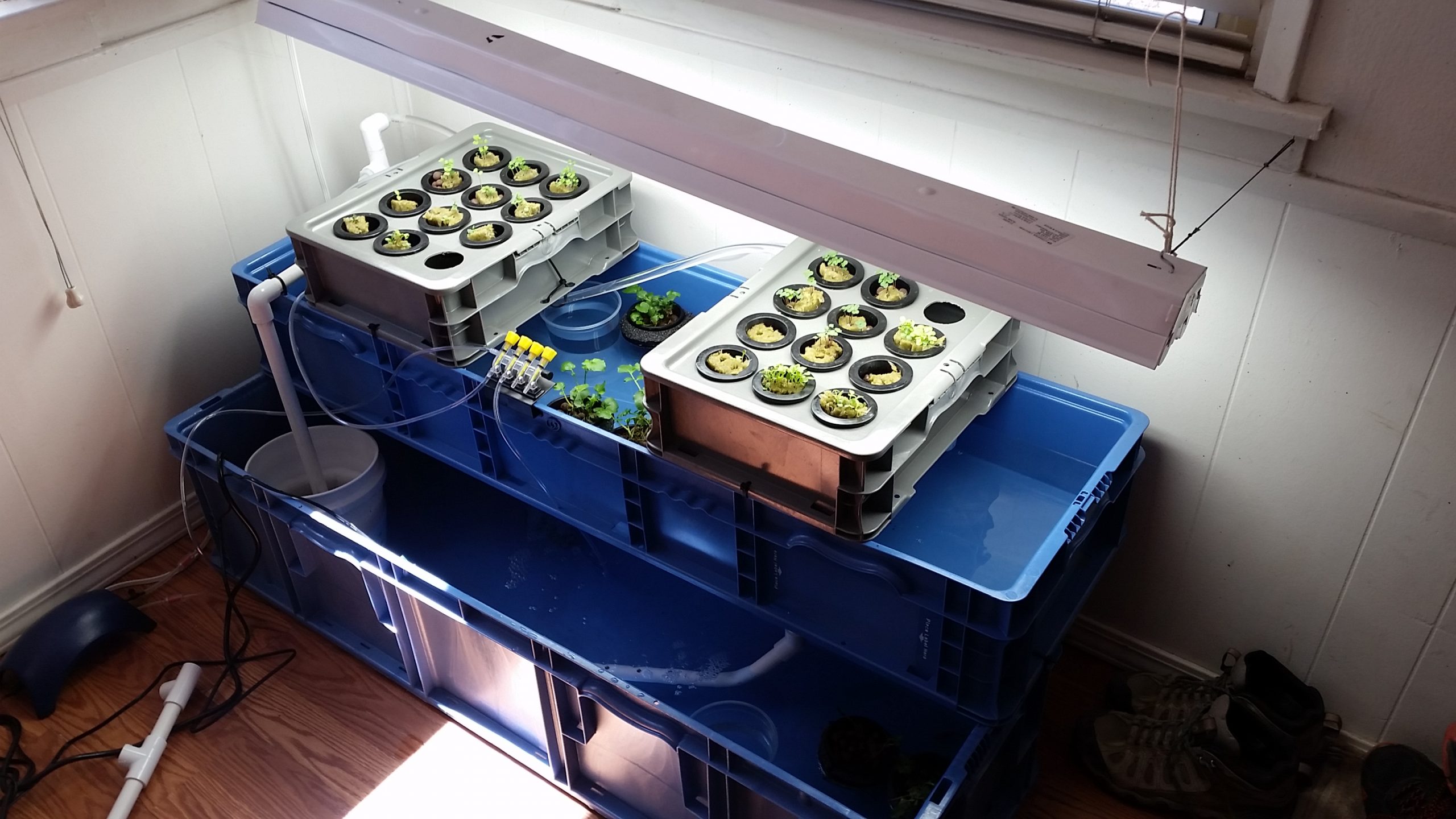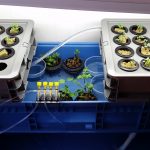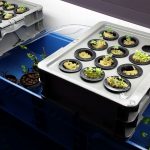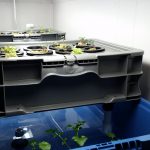DIY Aquaponics System 1 Indoors

Our mountain town gets way too much snow and way too many cold hours to have an outdoor garden, so I decided to build an DIY aquaponic system in the living room, and bring the garden inside for year round growing. I also wanted to make the system as aesthetically pleasing as possible, whilst bringing an outdoor experience indoors in a tasteful way.
My indoor aquaponic design started off as a fairly simple design. As it came together, I made changes. Some of the changes simplified the system, whilst others were improvements that may have increased the complexity, aesthetics, or efficiency.
The initial setup uses two 4 foot by 15″ totes, with one elevated and offset above the other, with two additional 12 site grow boxes on the very top of it all.
I eventually simplified this, but pushed to quickly get plants ‘planted’ and the system cycling properly. If you are unfamiliar with a nitrogen cycle, its the most critical part to any aquarium, and definitely the most fundamental thing in aquaponics to understand. Click Here for a simplified explanation in a post from a few years ago.
Upper Boxes
The two upper grow boxes are Deep Water Culture systems that each hold about 2.5 gallons. and have 12 2″ net pot grow sites.
Upper Offset 4ft Box – AKA the Goldfish Pond
As the Name implies, this holds some floating plants and 8 goldfish. In this type of environment, the goldfish have grown very fast.
Lower 4ft box that acts as a Sump, and a Crawfish Tank
This Tank holds 6 virile crawfish, to help me gauge future aquaculture bioloads, stocking density and demand.
The first version of the system used a 410 GPH pump pulling water through a Bucket full of Filter Floss, before doing a DIY gravel filter. The sump/crawfish tank was given a an aquarium gravel substrate, and I added MarinePure bio filtration media which is amazing on its own.
The water is heated with a 150w aquarium heater, and lighting is a simple Lithonia 4ft 2 bulb hanging fixture, with two LED bulbs.
I designed the system to have a low overall electrical requirement, and high vegetable production volume.
This is part one. I thought its was important to share the bare bones, even if the system has been well established by the time of writing this and has evolved into having fountains, more aesthetic clean lines, underwater LED lighting, different mechanical filtration, another tank, and the addition of some game fish.
Lower Tank Crawfish Tank/Sump(Orbis Wall Container) - 32.76
Hydor 150w Heater - 34.98
Hydrofarm Active Aqua 400 GPH Pump - 26.49
Tetra Whisper 60 Air Pump - 13.47
4 Foot Lighting Fixture
4ft LED Bulbs (grow light spectrum)
Miscellaneous but useful stuff… for cycling a tank properly.
1/2 inch bulkhead fittings - 3.79 each
Aquarium Gravel 20lbs –
MarinePure Bio Media Gems - 12.99 These are some of the best bio media balls you could ever add to a system… just read up on how much surface area they have! Its not BS. bacteria coolnizes in days and your water conditions improve just as fast. Of course they aren’t magic. You still need to know about the nitrogen cycle if you are going to have any success in aquaponics at all.
API Water Conditioner - 6.64 Removes Chlorine and Chloramines from your water.
Marineland Freshwater Bio Spira (Bacteria) - 6.49
Plant Growing Products
2 inch Net Pots - 12.99
Leica Clay - 13.95
Aesthetics
I personally don't mind the raw laboratory industrial look of the system. But since this sits in the corner of a living room. I got a wood wrap finish, and a few other major changes.
Personalized
If you though aquaponic systems are all ugly. Think again. In part two this system evolves into a very pleasing system to look at and listen to all day.




Leave a Reply